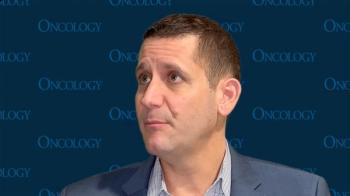
Perioperative Use of Nivolumab Yields No RFS Boost in RCC
Phase 3 data regarding perioperative nivolumab did not show recurrence-free survival benefit, but data from the study may help inform future research.
Data phase 3 trial that were presented at the
“Given the success of nivolumab in improving outcomes in metastatic renal cell carcinoma, there is tremendous enthusiasm for expanding the use of immunotherapy in those with early-stage disease at risk for recurrence,” explained lead investigator Mohamad Allaf, MD, urologist-in-chief and The Johns Hopkins Hospital Professor of Urology, Johns Hopkins University, Baltimore, Maryland.
The study population included patients with RCC with tumors greater than 7 cm or patients with smaller renal tumors with venous fat or nodal involvement. Patients with low-volume M1 disease were also included “provided it was completely resected within 12 weeks of enrollment,” Allaf said.
The study’s primary end point was RFS, which the investigators defined as time from randomization to disease recurrence or death, whichever came first. Secondary end points included overall survival, RFS for clear cell RCC, safety and tolerability, patient-reported outcomes, and correlative science.
A total of 819 patients were enrolled in the study, 404 of whom were randomly assigned to receive surgery/nivolumab of 415 to surgery/observation. In the surgery/nivolumab arm, 353 patients started neoadjuvant nivolumab, 359 received surgery, and 314 started adjuvant nivolumab. In the surgery/observation arm, 387 patients underwent surgery. Patients were closely matched by age and gender. Thirty-one patients in the surgery/nivolumab arm were Black or African American vs 30 in the surgery/observation arm, and 332 patients in the surgery/nivolumab arm were White compared with 340 in the surgery/observation arm. Approximately 50% of patients enrolled had cT1/cT2 disease, approximately 15% had cN1 disease, and approximately 3% had cM1. Approximately 75% of patients had an ECOG performance status of 0.
Post surgery, more than 60% of patients had pT3/pT4 tumors, and more than 60% had high-grade tumors. Approximately 80% of patients had clear cell RCC and approximately 5% of patients in each group underwent partial nephrectomy.
Allaf explained that a preplanned futility analysis was based on recurrence and death events.
“At approximately 71% full information time, inefficacy analysis results were presented to the Data Safety Monitoring Committee, and it was recommended that the results be released for futility,” Allaf said.
At a median follow-up of 16 months, there was no difference in RFS between the 2 groups (HR: 0.97 [95% CI: 0.74-1.28], one-sided P value=0.43).
“OS was not mature at the time of analysis but was not statistically different between study arms (HR: 1.48; 95% CI: [0.89 – 2.48], one-sided P value=0.93),” the authors wrote in their abstract.
“In terms of adverse events [AEs], the observed adverse event rates and types were fairly comparable to what is seen in other nivolumab monotherapy trials,” Allaf said. Ninety-three percent of patients in the surgery/nivolumab arm experienced an AE of any grade compared with 59% in the surgery/observation arm. Thirty-three percent of patients in the surgery/nivolumab arm experienced an AE of grade 3-4 as the highest grade vs 13% of patients in the surgery/observation arm. Treatment-related AEs with incidence greater than 10% included fatigue, abdominal pain, nausea, increased creatinine, pruritus, masculo-papular rash, diarrhea, arthralgia, increased alanine aminotransferase, increased aspartate aminotransferase, and hypothyroidism.
In his concluding remarks, Allaf said, “Perioperative nivolumab did not improve RFS in patients with renal cell carcinoma at high risk for recurrence in this trial…Ongoing radiomic, pathomic, and other biomarkers analyses within this trial may inform the design of future neoadjuvant renal cell carcinoma trials. Lastly, further analysis of patient subsets with this unique trial should help inform future research.”
Reference
Allaf M, Kim SE, Harshman LC, et al. Phase III randomized study comparing perioperative nivolumab (nivo) versus observation in patients (Pts) with renal cell carcinoma (RCC) undergoing nephrectomy (PROSPER, ECOG-ACRIN EA8143), a National Clinical Trials Network trial. Ann Oncol. 2022;33(suppl 7):LBA67. doi:10.1016/annonc/annonc1089
Newsletter
Stay up to date on recent advances in the multidisciplinary approach to cancer.
















































































